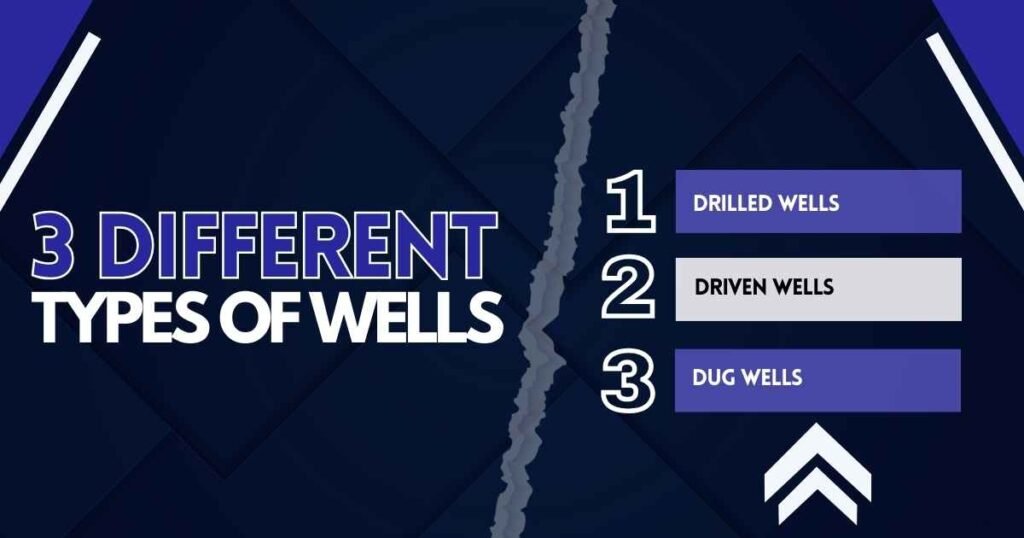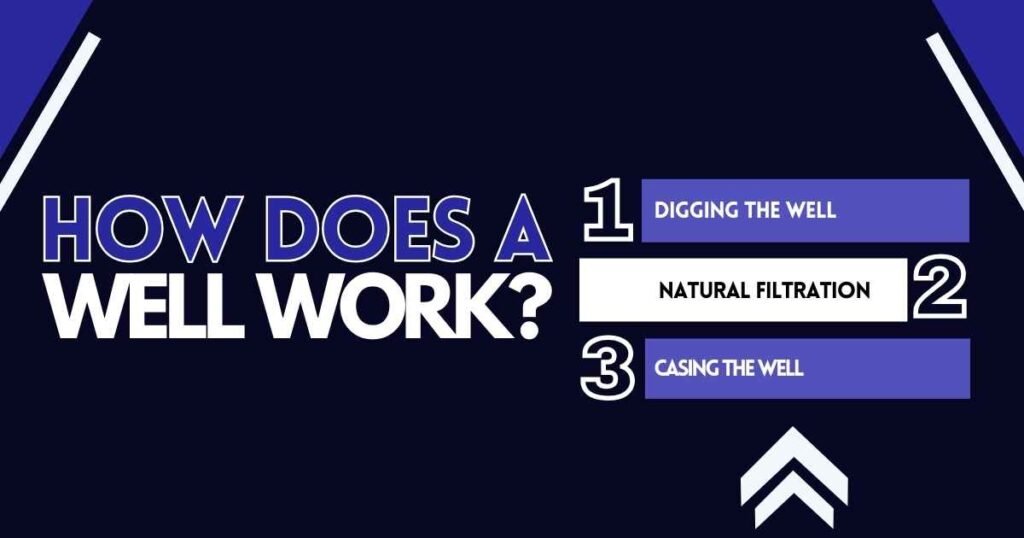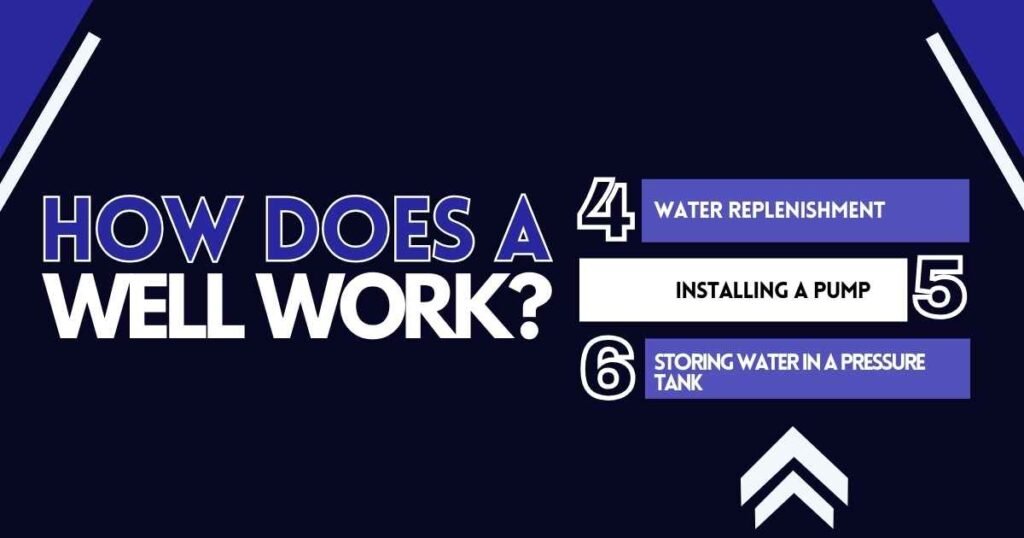Modern well systems are much simpler and more convenient than those from the past. Gone are the days of lowering a bucket into the ground and hauling water by hand. Modern plumbing handles everything for you, delivering water straight to where you need it.
If you’re used to city water, you might have questions about the well at your new rural home. Or maybe your current home has a well, but you’ve never thought much about it because the water seems fine. Is the water safe? Do you need to take care of the well? What problems can happen?
It’s important to understand the basics of well water. Knowing how it works can help you take care of it and ensure the water is safe to use. With a well, it’s up to you to manage the water quality and keep everything running smoothly.
What is a Well Water?
Well water is often hard water, meaning it has minerals like calcium and magnesium. While some minerals can be beneficial, too much can cause problems. Hard water can leave mineral buildup in pipes and water heaters, which can lead to expensive repairs. It also doesn’t work well with soaps and detergents, leaving spots on dishes, shower doors, and making cleaning harder compared to soft water.
Well water can also have other contaminants depending on your location. It might contain iron, sulfur gas, arsenic, nitrates, tannins, or other natural substances. In some areas, iron isn’t an issue, but in others, entire neighborhoods may use iron filters to prevent rust stains on surfaces the water touches.
Homeowners with wells should test their water at least once a year with a licensed professional. Many contaminants can’t be seen or smelled, so testing is the best way to ensure the water is safe for your family.
3 Different Types of Wells

Private wells, including modern water wells, come in three main types based on how they are built. Most wells today are drilled because they are safer and less likely to get contaminated.
1. Drilled Wells
Drilled wells are the most common and safest type of well. They can be very deep, often ranging from 100 to several thousand feet. This depth helps keep the water clean because it is less likely to be contaminated by surface water or nearby pollutants.
Drilled wells are made using machines like percussion or rotary drills, which can cut through hard rock and soil. They are fully lined with a casing, a strong pipe that protects the well and keeps dirt, rocks, and other debris from mixing with the water. These wells are suitable for most areas, including places with rocky or uneven ground.
2. Driven Wells
Driven wells are shallower, usually between 30 and 50 feet deep. These wells are built by driving a pipe into the ground until it reaches an underground water source, or aquifer, making them a common choice for tapping into a water source well. Since they don’t go very deep, they are best for areas with loose soil or sand and where ground well water is close to the surface.
Driven wells are fully cased, which helps protect the water from contamination, but they can still be affected by surface pollution, especially if they are near septic tanks or agricultural runoff. These wells are quicker and cheaper to build compared to drilled wells but may not last as long.
3. Dug Wells
Dug wells are the shallowest, typically 10 to 30 feet deep, and require a lot of physical work to build. They are dug by hand, shovel, or backhoe, making them one of the oldest methods of well construction. The walls are lined with materials like bricks, stones, or tiles to prevent the soil from collapsing into the well.
However, dug wells are not fully cased, which leaves them more exposed to contamination from surface water, animals, or nearby waste. Because they are so shallow, dug wells are often unreliable in dry seasons when the groundwater level drops. These wells are generally found in areas where modern drilling equipment is not available.
How Does a Well Work?
A well provides water by tapping into underground sources. The process involves drilling deep into the ground and using a system to bring the water into your home. Here’s how it works in more detail:

1. Digging the Well
A well professional drills a hole 100 to 800 feet deep, reaching below the water table, which is the level where the ground holds water. The depth depends on your location and the underground water levels. Deeper wells are often needed in dry areas to access clean and reliable water.
2. Natural Filtration
As water moves through layers of soil, sand, and bedrock, it naturally removes dirt, debris, and harmful substances like bacteria. This process helps clean the water before it enters the well. However, natural filtration may not remove all impurities, so regular water testing is important.
3. Casing the Well
A sturdy pipe, called a casing, lines the inside of a well to keep its sides from caving in. The casing also blocks outside contaminants like chemicals, dirt, and waste from mixing with the water. A seal, often made of concrete or clay, is added at the top for extra protection.

4. Water Replenishment
Gravity pulls more groundwater into the well to refill it as water is pumped out. This continuous flow ensures a steady supply as long as the water table isn’t overused or depleted. Heavy water use or drought can lower the water table, so sustainable usage is important.
5. Installing a Pump
A pump, placed at the bottom of the well or just above it, pushes water to the surface. This pump is powered by electricity and designed to handle the well’s depth. Submersible pumps are common for deep wells, while jet pumps are used for shallower wells.
6. Storing Water in a Pressure Tank
The pump sends water to a pressure tank, typically located in your home’s basement or utility area. This tank stores water and helps keep the water pressure consistent when you use faucets or appliances. It also reduces how often the pump needs to run, extending its lifespan.
7. Distributing Water
Pipes carry the water from the pressure tank to all parts of your home, including faucets, sinks, showers, bathtubs, washing machines, and dishwashers. The system ensures clean water is available whenever you need it.
A well works by tapping into underground water, filtering it naturally, and using a pump and pressure tank to deliver it to your home. This system provides a reliable and convenient way to access clean water for everyday use, as long as it’s properly maintained and tested regularly.
The Hidden Value of Your Well
Curious enough? Even with all the modern convenience of well systems, it’s easy to overlook what goes on beneath the surface. Just like maintaining a car or home, understanding how a well works helps us appreciate the clean water we rely on every day. Taking care of your well and staying informed ensures you always have access to this essential resource—because sometimes, the things we can’t see make the biggest difference in our lives.
Keep your well running smoothly and your water clean with the help of Vegas Plumbing Pros. Our team of experienced professionals is here to inspect, maintain, and repair your well system, so you never have to worry about interruptions in your water supply. Regular care not only keeps your water safe but also extends the life of your well. Contact Vegas Plumbing Pros today to schedule a service and ensure your well is in top shape for years to come!
FAQs
How does water get in a well?
Most wells don’t draw water from underground rivers. Instead, they get water from aquifers. Aquifers are layers of rock and soil with tiny spaces where water slowly flows through. If you want to know all about wells, it’s important to understand that, contrary to what some might think, there aren’t huge caves under the ground with fast-moving rivers.
What is the function of a well?
In many areas, wells provide plenty of water for homes, farms, and businesses. They are essential for drinking, cooking, cleaning, and irrigation, supporting both daily life and agriculture. In dry places like deserts, where rivers and lakes are scarce, people depend on groundwater to survive and grow crops.
How long does a water well last?
If your well is 20 years old or more, it may soon need to be replaced. Understanding the purpose of a well is essential, as it provides a reliable water source for your household or property. Most water wells last between 20 and 30 years and rarely work well beyond that. Older wells often have problems like mineral buildup, which can affect performance.
Do wells run out of water?
Groundwater depletion can cause wells to dry up when the water table, which is the top layer of underground water, drops too low for the well to reach it. This can happen due to overuse of water in the area, droughts, or changes in the environment. When a well runs dry, it may need to be deepened or replaced, which can be costly.



